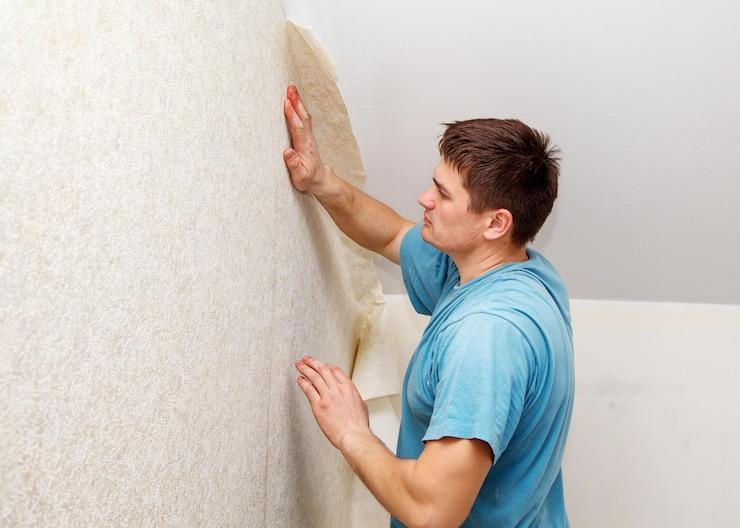When it comes to elevating the overall space decor, wall design is one of the most picked aspects. Everyone wants to cover walls with eye-catching prints, colors, and textures. A wide variety of wallpapers are in trend in the UAE market.
Unlike paint, wallpaper needs precise attention while adding it to the wall surface. Different types of wallpapers require specific installation methods due to their complex designs and structural integrity. If you’re going to cover walls with wallpaper but don’t know how to install it, you’re at the right place now!
In this blog, we’ll assist you through the DIY installation guide to ensure a smooth, seamless, elegant setup for the years to come.
Wallpaper Installation: Step-By-Step Walkthrough
Wallpaper installation is all about preparation, sufficient knowledge, and executing the place just like other projects in daily life. Understanding how to install wallpaper in Dubai can lead to a vibrant transformation.
Here’s a description of all the processes from startup to finish, including the required tools for installing wallpapers flawlessly by yourself.
- Measuring Wall Dimensions
- Prepare the Walls
- Create Vertical Lines
- Apply Adhesive Material
- Hanging Wallpapers
- Bubbles Smoothening
- Trim edges
Measuring Wall Dimensions
Measuring the dimensions of your walls accurately is one of the most critical steps in gracefully installing wallpaper. Proper measurements ensure perfect fitting without any loss or short runs.
This section will guide you through all scenarios you may encounter, including standard walls, walls with angles, walls with openings like windows or doors, multiple walls, and walls in the staircase.
Standard Walls
Begin by measuring the width of the wall from left to right, then right down on paper. Now, measure the height of the wall from top to bottom.
Always remember that not all walls are perfectly straight, so it’s a suggestion to keep 6-10 cm extra in case it shortens.
Walls With Angels
Carefully measure the total width and height of your place, as wallpapers are available in rectangular shapes, they can be cut down to be adjusted in tricky corners, or sloping ceilings.
Walls With Openings
Measure the total width and height of the walls, including openings for windows or doors, as wallpapers come in complete rectangular coverage. After receiving the shipment, you have to cut away the door and window wallpaper while installing it.
Multiple Walls
Accurately measure individual walls, then add all wall widths together, and order a large single wallpaper to cover multiple walls to ensure seamless integration. It’s a good approach to add a 10-15 cm extra margin when ordering for multiple walls, so the short length does not cause any flaws.
Walls With Staircase
While measuring height, you have to measure from the lowest to the highest point of the wall, and do the same process for the width. When installing the wallpaper, cut down the slopes.
Preparation Of Walls
Wall preparation is an essential step in creating a refined, smooth, or seamless surface for wallpaper or wall panel fitting. For a better approach, follow these suggestions that might help you in this stage.
- Before proceeding with wallpapering, make your walls even in texture, fill in any deformities, and remove dust and peeling paint to make the surface smooth. If the surface texture is fiberglass or other woven wallpaper, then it is suggested to paint it before installing the wallpaper.
- If the surface is moisture absorbent, then it must be primed or pre-glued.
- On the other hand, if the surface is dry, then it requires tools like a plastic scraper, warm water, and a sponge.
- With the help of a plastic scraper, detach the edge of the previous wallpaper or any other unwanted material, and it easily comes away.
- Then clean it with warm water or dry it using a sponge.
Create Vertical Lines
To ensure that your wallpaper goes straight to the baseboard, use can use a pencil to draw several vertical lines across the walls to depict where the panel has to go. If your wallpaper does not have any focal design on the wall, you can begin from the left to the right side.
Apply Adhesive Material
Use a soft roller or brush to apply an even layer of adhesive material at the back of the wallpaper, especially near the edges. Now, hang the first strip on the wall, and remove air bubbles using a smoothing tool. Then apply the other wallpaper onto the wall, and paste the other wallpaper panel slightly onto the edge of the previously applied wallpaper for a flawless finish. To remove any excess paste residue or flatten air bubbles, use a dry sponge or a soft cloth soaked in warm water.
Hanging Wallpaper
Installing wallpaper on standard walls might be simple. However, some areas like around electric sockets, inside and outside corners, doors, and windows might be challenging. This section provides you with complete assistance.
- Wallpapering around electric sockets
First, turn off the power. Then apply glue around the switch or socket, apply wallpaper, and leave it to let it be dry. Use a pencil to mark around the socket and cut the excess edges neatly using a wallpaper knife. Ensure accurate and precise trimming of edges for a professional look.
- Wallpapering around doors and windows
Do wallpapering as usual from left to right. When you reach the openings, apply the paste to the strip, then hang the wallpaper from the ceiling, and cut the opening frame, cut a 45-degree angle from the corner to make the curve. Then press the wallpaper against the door or window ledge, now skillfully with a sharp knife.
- Wallpapering inside corners
When you get to an inside corner, apply glue to the corner of the wallpaper and the wall. Then gently press the wallpaper against the corner.
- Wallpapering outside corners
In this case, simply fold the wallpaper around the corner, and ensure the fold goes over 2cm, so order slightly larger wallpaper.
Bubbles Smoothening
While hanging wallpaper, often air bubbles form, creating an unpleasant look. To prevent this use, a soft or plastic-crafted smoothing tool is used to gently rub on the wallpaper to press out air bubbles. Start flattening from the center of the wallpaper, then go towards the outer edges.
Trimming Excess Edges
When the paste dries, look for any excess overlapping edges of wallpaper. The process requires careful consideration. Use a sharp taping knife to cut down the excess edge of the wallpaper from top to bottom. While trimming, frequently change the knife blades to avoid uneven edges.
The Bottom Line
To sum up, we’ve explored the thrilling journey of wallpaper installation. By following these simple guidelines, you can perform a wonderful installation process, creating a charismatic and professional transformation for your residential as well as commercial purposes. Let’s begin with the stylish and exciting modification today to elevate your living experience.

